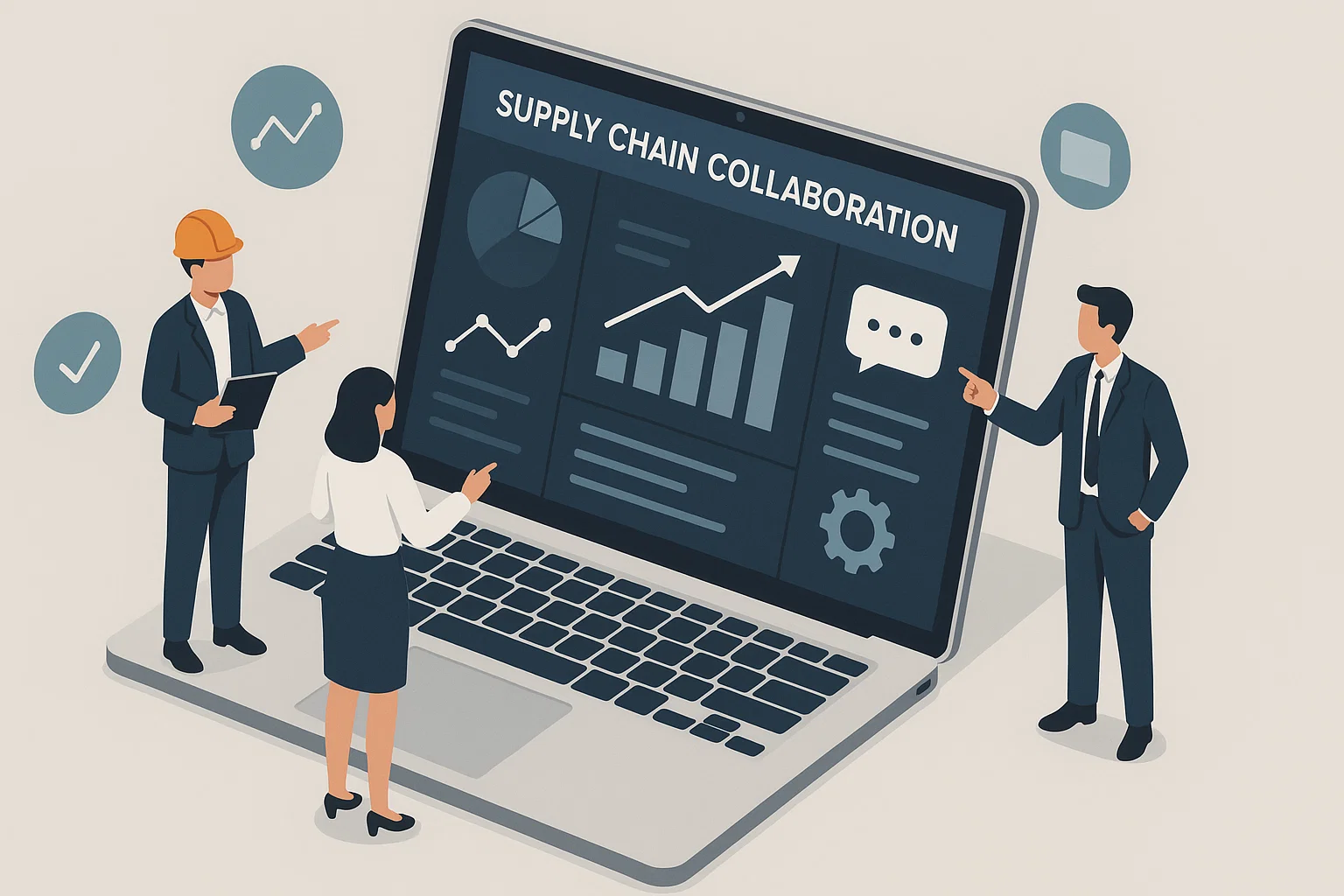Time to Switch Your Supplier Collaboration System?
It’s easy to stick with the same digital tools for years, especially when they’ve become part of your team’s daily routine. But just because something works doesn’t mean it works well. If your supplier collaboration system feels outdated, slow or just plain frustrating, it might be time to consider whether it still fits the way your business runs today.

Let’s take a look at some common signs that a change could be worth exploring – and what you should keep an eye on if you decide to look for a better system.
When Things Start Slipping Through the Cracks
You know the feeling. A missed delivery. A misunderstanding about product specs. A spreadsheet that doesn’t match the final order. These things happen – but if they’re happening more often, your supplier collaboration setup might be part of the problem.
It’s not always about major breakdowns. Sometimes it’s the small things that build up. Maybe your team has started relying on workarounds like long email threads or last-minute calls to fill in the gaps. That’s not collaboration. That’s patchwork.
If your current system doesn’t help you stay ahead of changes, manage shared files easily or keep everyone on the same page, then the system isn’t really doing its job. And when supplier relationships start suffering because of it, it becomes more than just an IT issue.
Suppliers Are Frustrated Too
Suppliers are on the other end of your systems every day. If they find it hard to update product details, upload documentation or get timely feedback, you’re creating extra work for everyone involved. Maybe they’ve started chasing answers more than delivering updates. Maybe they’ve even told you that the system is a headache.
When that happens, it’s not just an internal problem anymore. Poor collaboration tools can make your business look disorganized. Worse, they can push good suppliers away. If your current setup isn’t making things easier for the people you rely on, you’re paying a hidden cost.
You Spend More Time Managing the Tool Than Using It
The whole point of a supplier collaboration system is to make processes smoother. If it takes a training session just to remember how to upload a document, something’s off. Older platforms often come with clunky interfaces, confusing menus or features that feel bolted on.
Modern tools are built differently. They focus on clarity, real-time visibility and smart workflows. A good supplier collaboration system should be intuitive enough for new users and powerful enough for complex supply chains.
If you or your team find yourselves spending more time navigating the tool than actually using it, you’re not getting the value you need.
What to Look for in a New System
Switching systems can feel like a big step. But if you know what to look for, it doesn’t have to be a leap in the dark. Here are a few concrete things that can help guide the decision:
- Real-time communication: A system should support direct communication within the platform. No more relying on separate chat tools or email chains.
- Custom workflows: Every supply chain works a little differently. Look for a tool that lets you build and adjust workflows to fit how your teams actually operate.
- Clear user roles: Everyone involved should only see what they need to see – and be able to act without unnecessary steps.
- Version control: No more “final_final_v3.pdf” files. A strong version history keeps everything organized.
- Easy onboarding: The system should be quick to pick up. If suppliers and internal teams need hours of training just to get started, that’s a red flag.
It’s About Fit, Not Features
Lots of systems come packed with long lists of features. But it’s not about ticking boxes. It’s about whether the system actually fits the way your business works.
If your team is small and agile, you need something flexible. If you deal with large supplier networks and complex processes, you need something that can scale with you. The right platform should feel like a partner, not another layer of complexity.
Ask yourself: Are people using the system because it helps them – or because they have to?
Don’t Wait for the Big Problem
Many companies don’t switch tools until something goes seriously wrong. A missed deadline. A regulatory issue. A lost contract. But by then, the damage is done.
The smarter move is to make the switch while you still have control. When you’re not under pressure. When you can evaluate calmly and make thoughtful decisions about what’s next.
Sticking with what’s familiar can feel easier. But if your supplier collaboration setup is slowing you down, frustrating your team or causing friction with suppliers, then holding on might actually be the riskier choice.